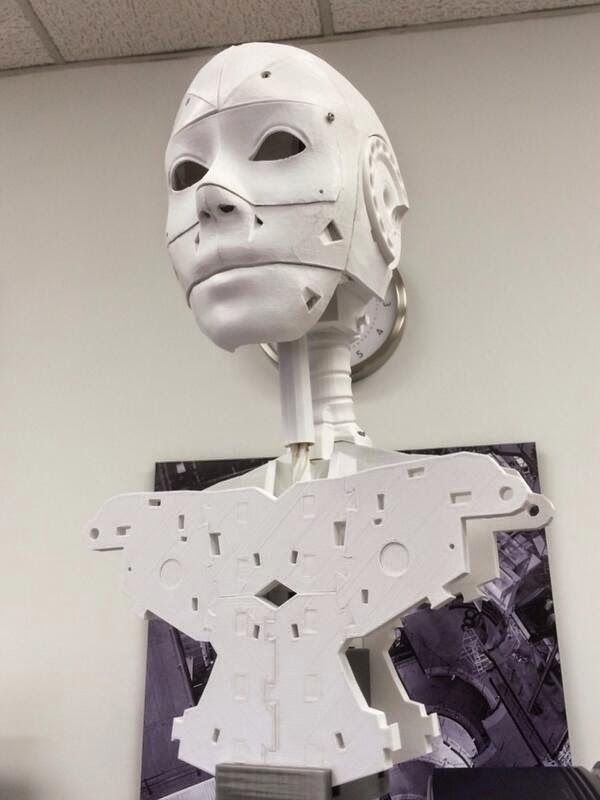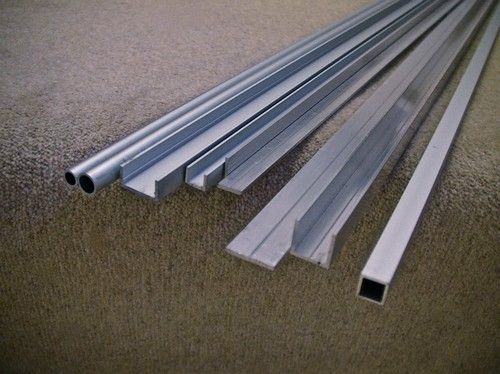In lieu of a decent name at present for the rock-crawler slash 4x4 slash thing with wheels, I'm going to call it the "Truck".
I can see this turning into a long series of posts, to get enough detail and ramblings in for the whole design and construction process.
In this first post, I'll cover most of the design logic, and a lot of the parts being used. By no means will this be a finalized design prior assembly, nor a parts inventory, but should give others dumb enough to want to build an RC vehicle like this, sufficient pointers to get something under way.
Chassis
The design for the chassis is where the whole idea came from - to build a basic structure using aluminium extruded profiles and with conventional fixtures and fittings.
I've got a lot of ideas for chassis, and given how much aluminium I've got, I'll probably try a few (I may even consider using quick-release hardware to enable the axles to be moved between chassis). Dictated by the axles, the scale and general structure will be built to accommodate the positioning of the suspension and linkage mount points. As the battery and electronics are discrete enough to be fitted anywhere there's space; the axles are the most critical thing to secure before construction.
I may consider a payload on the vehicle, so it may be necessary to tweak the design accordingly, to create a bit of useful space. I'm thinking mainly electronics so not a massive weight.
Axles & Drive Trains
I can see only two ways of approaching a project like this - hack or buy existing axles. Falling short of designing a gear box, axles and housing, I thing the best solution is to either hack existing drive train components or to buy whole drive trains. The former still leaves a lot of issues, as to building a housing and getting the steering, diffs, axles and gearboxes mashed together. The latter is a lot easier, as you can either rip the units of existing used vehicles (eBay etc), or buy the drive trains as spares. The trouble comes in ensuring the chassis is somewhat similar in proportions to the original vehicles, at least in terms of linking the suspension and the four pairs of linkages.
From an early stage I opted for Motor-on-Axle rather than using a drive shaft to a centrally mounted gearbox, for a start it makes each drive train a single unit that just needs power, it increases the range of motion, lowers the centre of gravity and reduces the number of moving parts liable to screw up.
I couldn't find anything used in the time frame I set myself, so I sourced a pair of Gmade drive trains (sans-motor, pinion gear and servo). The beauty of these is that they're reversible, allowing for a simpler mirrored chassis design and also allowing for front and rear steering.
The drive trains do have diffs, and from what I understand, they're not lockable on this, falling short of gluing the diff, or filling with diff lock grease. Can't have everything.
Suspension & Linkages
This area is giving me the most grief.
Hardware wise, I think I'll source either spare parts from HPI or Axial cars, or try to source anodized aluminium hex nuts/bolts - not an easy task either way.
I've sourced Ansmann 95mm shocks for front and back, and I'm on the lookout for linkages. I'm planning to use two pairs of links for each axle; forming a "W" shape. The suspension will be almost vertical so there'll be plenty of movement and sufficient rigidity.
Edit #1: I've sourced a set of Axial XR-10 linkages and chassis mounts, so hopefully it'll all come together.
Edit #2: Having now received the axles, it looks like my search for linkages was in vein, as they've got a complete set with them, plus lots of extra bits as well. And a really dumb error, I assumed the XR-10 was 1/8th scale for some reason, but it's 1/10th. The linkages should be okay though, as the they have the right mechanical specs - though I might not need them if the Gmade ones are good enough.
Motors & Electronics
As mentioned, both axles will be powered by 35 turn HPI Saturn motors. They're quite general purpose, so it'll have a bit more speed than regular rock crawlers, with a loss in capability on the rockier terrain. They're easy to replace at any time, so I can always put 55 turn for some heavy rock crawling.
I'll be using another 3-channel 2.4Ghz Rx, so I'll have an extra channel to play with (perhaps to enable/disable rear steering etc). For cost and simplicity I'll start with a single Tamiya ESC (104), Y-linked to the motors, allowing for parallel control of both motors. I may find that a bad solution, especially if one axle gets jammed, and the other motor gets fried - but I'll need to play around with the safety and overloads of the ESC, and just be careful in general.
The front axle will have steering, with option of unlocking the rear and putting steering on that too. I might gear down the servo on the rear to reduce the steering effect, that I'm not sure of at present. Initially I'll build with a stock Acoms servo, but I will install higher-torque ones as needed - I can see this being an issue very quickly.
Wheels & Tyres
I've luckily managed to source a set of Axial SCX-10 rims and tyres, so all should be sorted on that front. That makes for a nice short section.
Body Shell
I'm undecided what I want it to look like... It can go any direction at this stage! I do like the look of the Axial XR-10, so I might take that approach, at the same time a Land Rover 110 would be cool. And also making it look like a military robot has it's charms too (think carbon fibre looking, works well with all of the aluminium). I'll sketch a few ideas out, and see where it takes me.
With the 1/8th axle scale, it's going to be a little harder to find a suitable shell, without this looking like a monster truck (not a bad thing, but not the intention). I'm also inclined to fit a lot of surveillance equipment, so a more ruggedized shell will probably be called upon! I'm probably going to rename it something pointless, like the "All Terrain Surveillance Drone" or ATSD if that's the case.
For now, I think that rounds of most of the "design", and explains most of the parts I'm using and the reasoning behind it. In the next few parts, I'll cover the build-out of each component and some interesting little tidbits along the way too.
I'm off to start cutting aluminium and bolting crap together.






